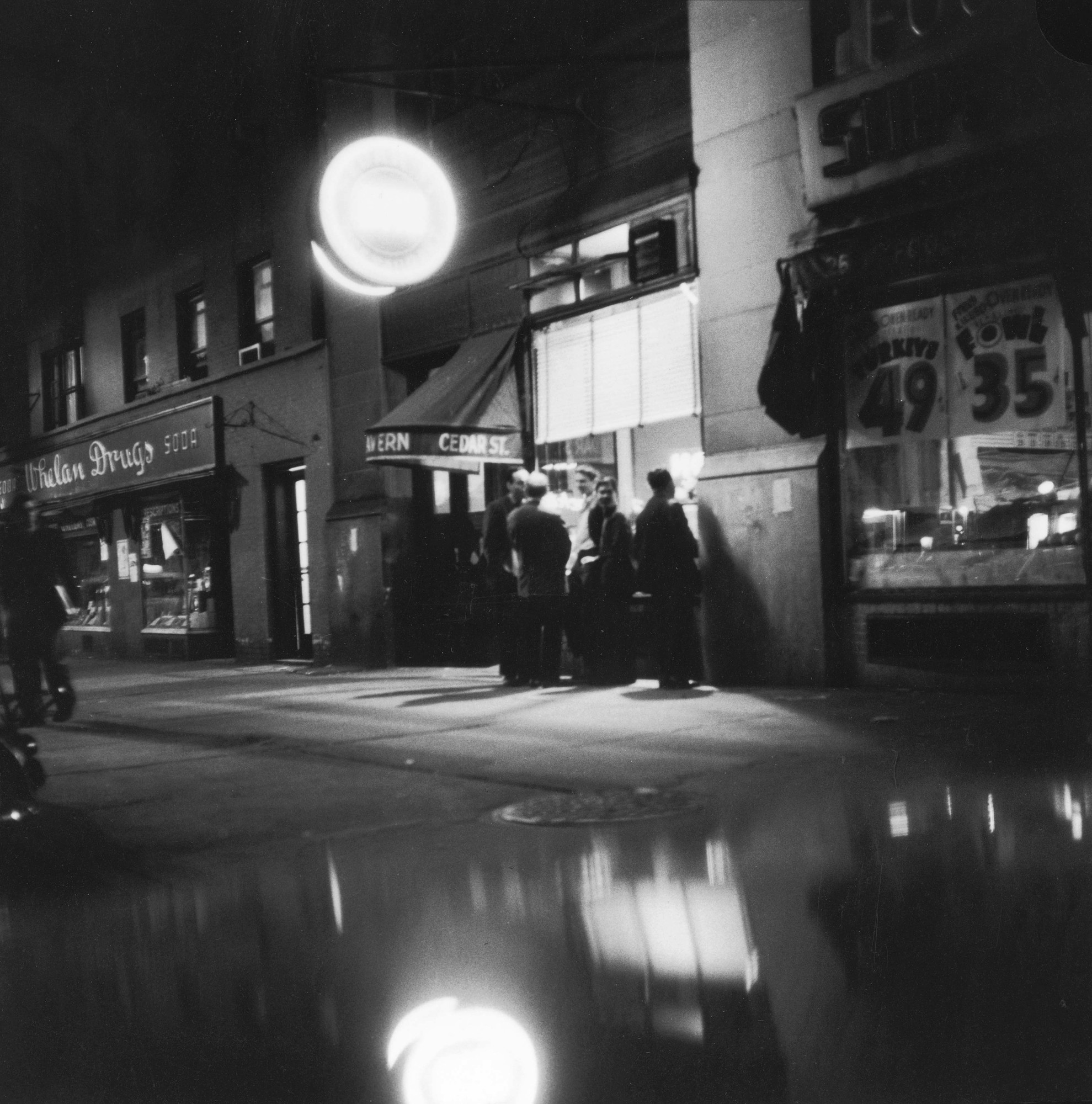Opened just after the end of the Civil War in 1866, the Cedar Tavern took on a new life as a fixture for avant-garde artists, musicians, and writers in the 1940s and 1950s. Aspiring artists would show up at the fabled University Place haunt to get noticed. Rauschenberg, who had recently shown at the legendary Betty Parsons Gallery, would play junior member of the club. "One beer would last me six different artists’ fantasies. Rothko, Barney Newman, Franz Kline, Bill de Kooning, Reinhardt and Pollock occasionally," Rauschenberg recalled. Pollock, he remembered, "always opened every conversation by asking, 'Who are you? What do you do?'" Rauschenberg later reflected that he learned more about art at the Cedar Tavern than in his classes at the Art Students League.
